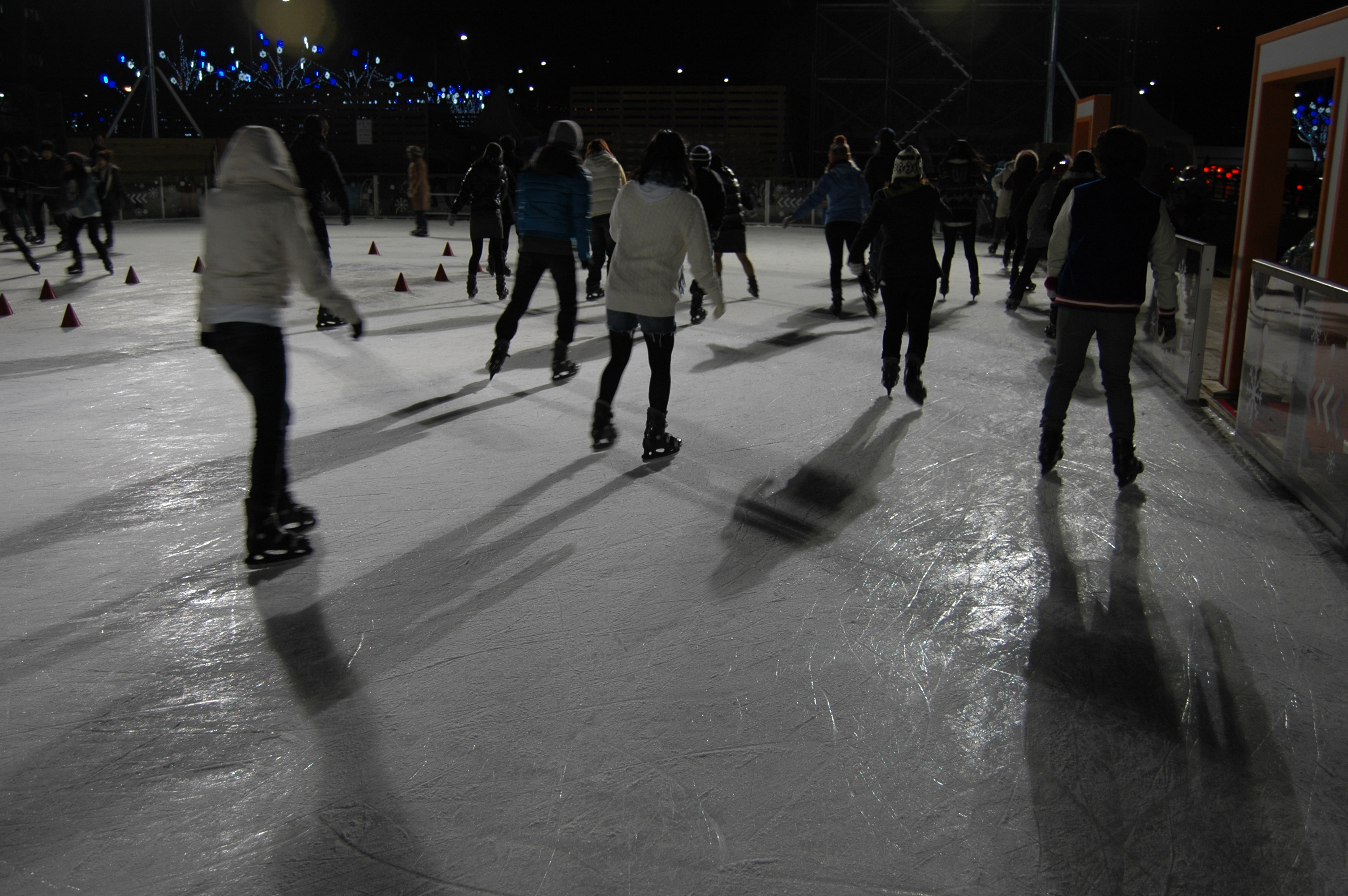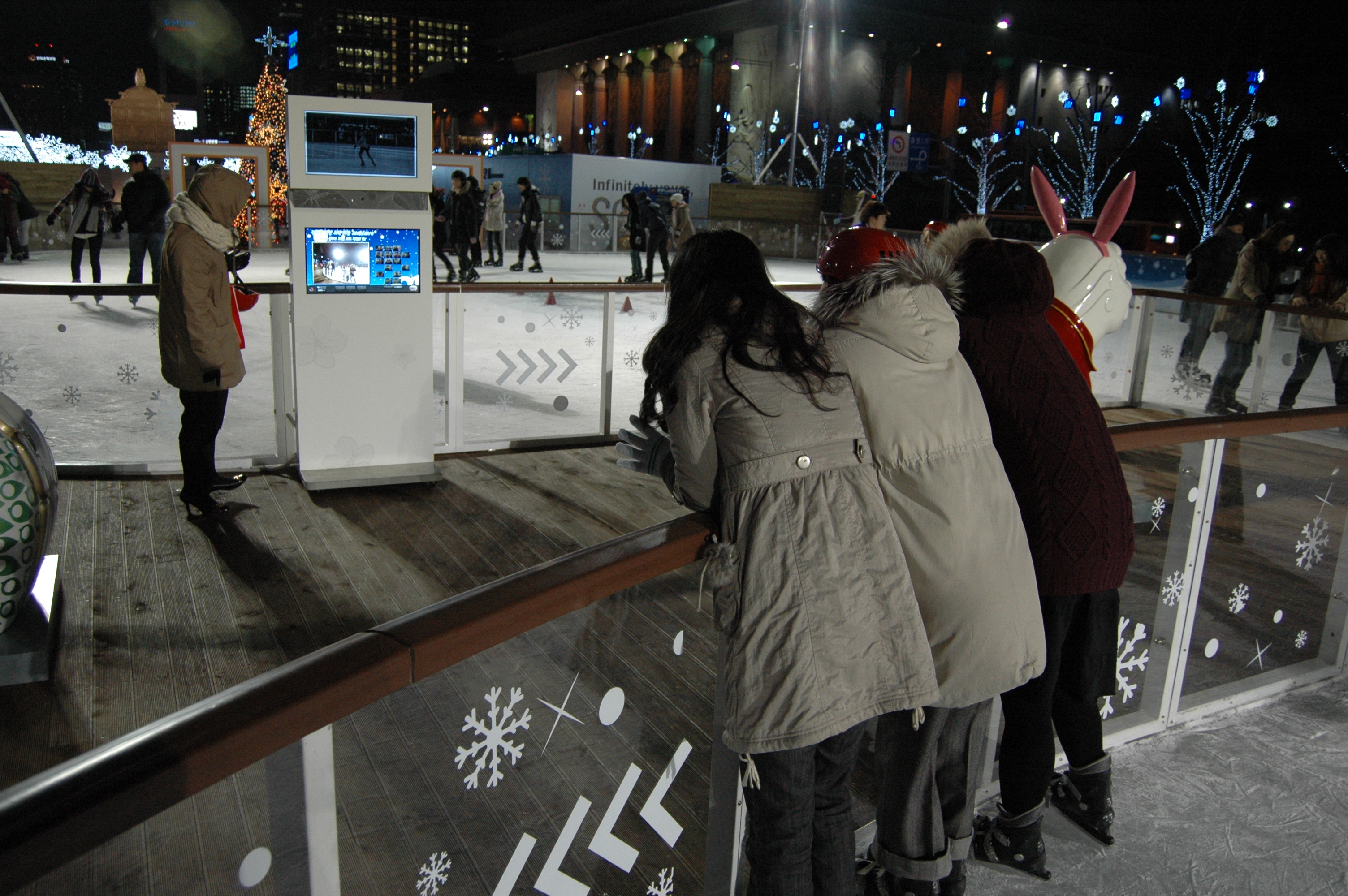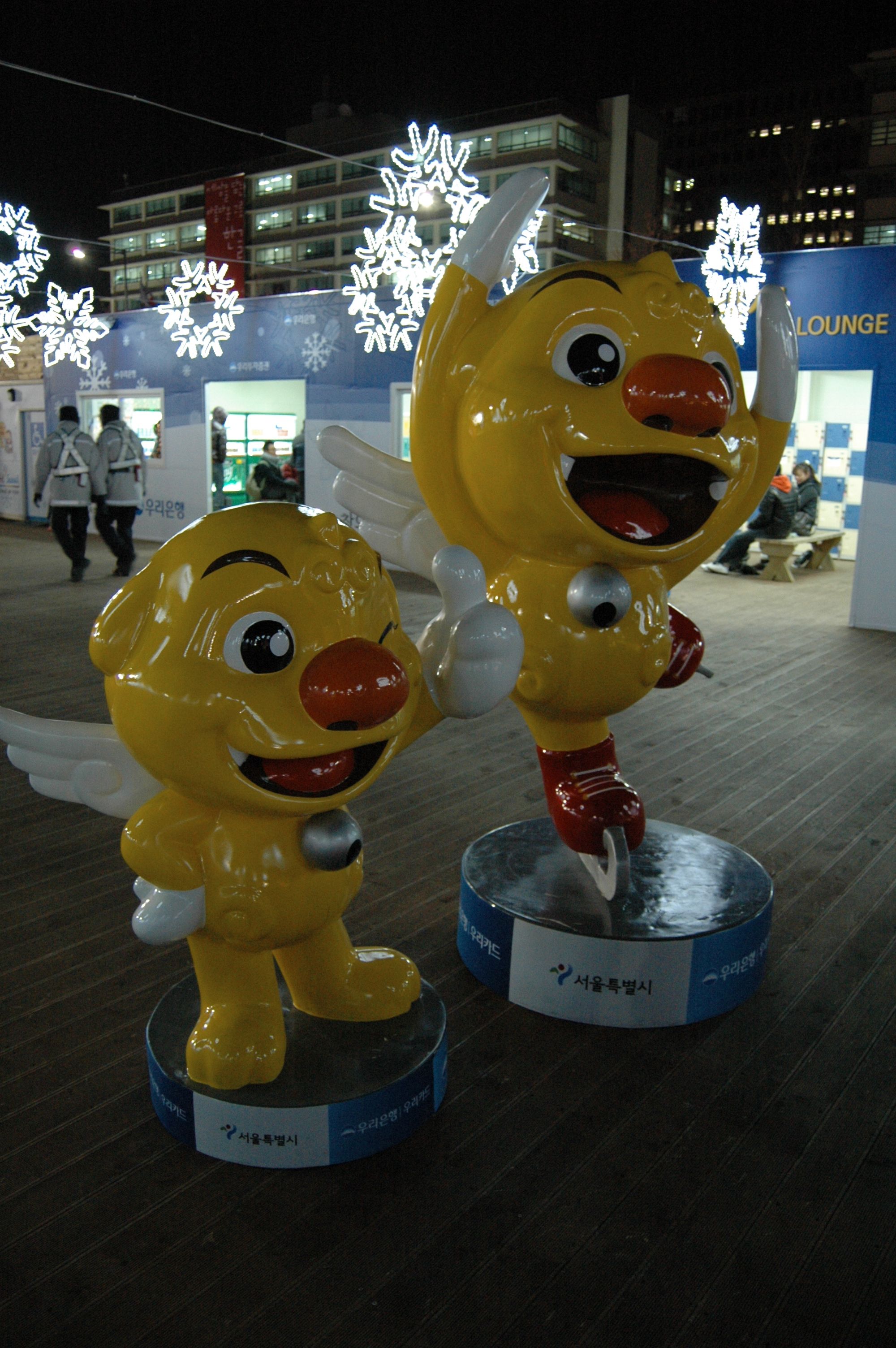
When living at home forces young Koreans to keep their sexual encounters a secret, it’s no great surprise that Korean society strongly discourages open expressions of sexuality outside of marriage.
In particular, rare expressions of assertive female sexuality in the media seem to get parodied until they lose all their impact, if they’re not banned outright. And from teenagers? Simply unthinkable, despite abundant evidence of their sexual activity.
Which is not to say that they don’t exist. Rather, that while most Koreans will readily admit the sexual nature to, say, the clothing and dance moves of a 20 year-old female singer (at least privately), they will probably be much more reluctant to do so if she is 16.
Don’t get me wrong: regardless of their age, I think it’s perfectly natural to feel sexually-attracted to a fully-developed member of the opposite sex (acting on that attraction, however, is a different matter). Deny that sexual element though, and there are are few social inhibitions against grown men expressing their liking of teen members of girl groups like Girls’ Generation or the Wondergirls and so on.
Or are there? While 46 year-old Mr. Kim has no qualms about waxing lyrical about Girl’s Generation on the front cover of Metro newspaper above, I doubt that he would be quite so forthcoming in real life, nobody really fooled that his interest was entirely asexual. And only skimming the first few paragraphs when I first saw it, highlighting that subtext was my original intention in translating this article for you. After all, in just the third sentence you have him denying that he has a “Lolita complex.”
But actually the article is about how middle-aged Korean men and women are increasingly dominating young celebrities’ fan clubs instead. And as I’ll explain, this struck a chord with me because of what I’ve already read about women’s fan clubs earlier this decade.
Unfortunately I can’t speak for the male fan clubs, which I’ve never studied. But in short, I think that the demographic shift within Korean fan culture described is genuine, and so I’ve decided to make this post a discussion of the reasons for the shift that the article lacks. But first, the article itself:
Middle-aged People are Head Over Heels about Young Idols
Fan Culture is Changing
#1. Mr. Kim (46), a department manager of a medium-sized business, knows the names and personalities of all 9 members of Girls’ Generation. He thinks that the Wondergirls and 2NE1 do not even come close in terms of purity and class. He dismisses accusations of having a Lolita complex, and says that watching the girls of Girls’ Generation, who are about the same age as his daughter, give him a feeling of life and vitality.
#2. Film company CEO Mrs. Kim (39), suffered severe depression after her movie did extremely badly 2 years ago. But she was able to recover because of her interest in male idol groups, and when she analyzes the charms of members of 2PM, or discusses the potential for the new group MBLAQ, she is indistinguishable from an expert in the music industry. Her dream is to make a movie like Attack on the Pin-up Boys (2007) that Super Junior starred in.
Middle-aged People Are Actively Participating in Fan Clubs
As the name implies, “older brother” fan club members used to be mainly teenagers, but this is no longer the case. But as active consumers of culture, middle-aged women passionate about flower men‘ and middle-aged men heavily into girl groups are actively changing fan culture.
For instance, on flower man Lee Min-ho’s fan club “Dave,” there is an “older sister” section of for 30-50 year old women to exchange information about their star, and when there are fan meetings with him they make up over 80% of the audience. And whenever SS501 (James: if you don’t want to show your age, say “double-ess” rather than “ess-ess”!) have a concert in Korea or attend some event in their region, their middle-aged female fans prepare packed lunches with healthy foods such as red ginseng for them.
And whenever there is an event featuring Rain, his middle-aged female fans call the media and request favorable coverage. Before the release of his first Hollywood movie Ninja Assassin (2009), they even delivered rice-cakes to them, a symbol of good luck for a new venture.
Indeed, it has become quite normal to only allow women older than the flower men themselves to join their fan clubs. And this is true for male-only fan clubs for female idols too. In the Girls’ Generation’s “Girls’ Generation’s Party” and the Wondergirls’ “Wonderful” fan clubs for instance, middle-aged men have regular virtual meetings where they exchange opinions about how the groups can progress and thoroughly how they can celebrate group anniversaries and birthdays and so on.
A New Fan Culture is Actively Forming
Many people have dim views of middle-aged men and women who don’t act their age, dismissing them as merely chasing after their lost youth. But an alternate view is that this demographic shift in membership is an inevitable change.
Professor Tak Hyeon-min, on sabbatical in the Cultural Contents Department of Hanyang University, said “People of the 386 Generation, who have finally established their own unique culture, are used to actively absorbing new things,” and that “from their 20s until now, they have demonstrated that they are the biggest consumers and purchasers of cultural products.”
Also, “members of this generation are stuck with heavy family, home, and/or social responsibilities, so as a means of escapism and renewing themselves, they have created a middle-aged fandom in a sense, fundamentally changing Korean fan-club culture in the process.” (end)
Now, the reasons for this shift? Well, I’d wager that most 30-something members of the female ones were also active “Red Devils” during the World Cup of 2002.
Granted, that sounds obvious. But for those that witnessed it, 2002 was a simply amazing time to be young and in Korea. And as it turned out, a watershed in Korean sexual politics too, primarily because of the unprecedented participation of women.
It is the factors that made that participation possible that makes this cohort of women so interesting. For they appear to be applying the same lessons to fan clubs today.
Consider how before the World Cup began, soccer was considered an exclusively male sport, and a rather dull and unglamorous one at that. Members of the national team even made less money than I did as an English teacher.
Within a few short weeks however, Koreans turned out on the streets in their millions to watch their team’s games on giant TV screens across the country. And – crucially – not only were two-thirds of them women, and their restrictions on the amount of skin they could publicly display suddenly lifted, but the male players’ bodies were transformed into a product for their consumption also.
True, this did build on trends already existing in music videos in the late-1990s, but only with the World Cup did it suddenly became socially acceptable to discuss men’s bodies in the media like men already did of women’s.
 As an aside, please note that this is not contradicting what I said in the introduction about expressions of sexuality being restricted in the Korean media though. There are still limits, all too easy to overlook if a particular cultural product is studied devoid of its context.
As an aside, please note that this is not contradicting what I said in the introduction about expressions of sexuality being restricted in the Korean media though. There are still limits, all too easy to overlook if a particular cultural product is studied devoid of its context.
For instance, consider one recent manifestation of the male objectification sparked by the World Cup, a commercial involving women admiring the abs of a half-naked male singer on a poster, then poking them to see if they are real. While it may appear rather “Western” though, one will struggle in vain to find references in the Korean media to what one might actually want to do with an attractive male singers or his abs. Similarly, consider how the Korean language has readily adopted the English word “sexy,” but is frequently used in ways that are completely devoid of anything remotely sexual (sometimes perversely so), or how it can even be quite a trial to get many Koreans to publicly admit that a women thrusting her buttocks in your face on television can be sexual.
To be fair, Korean films are rather different. And all that is not to say that the Western media is replete with discussions à la Sex and the City either. But sexual liberation in the Korean media is very much just a veneer, and it is important not to overestimate the extent of the changes I describe. Indeed, I could go on and point out how in 2002 Korean women could still not publicly discuss foreign men’s bodies in the same way they suddenly could for Korean men’s for instance (the Korean media laughing at Japanese women for doing so), and even today it is extremely rare to see foreign male-Korean female relationships in the Korean media. Also, while standards of dress for women did indeed change permanently, many people that had tolerated crop-tops, say, during the World Cup, were less willing to do so once they were no longer in the service of a national cause.
But rather than diminishing from Korean women’s achievements in 2002, perhaps these limits demonstrate just how remarkable it was that women effected any change at all?
Apologies for the whirlwind tour of 2002 I’ve provided so far, but that’s because I have already discussed it at great length here, which also has a list of the sources if you’re interested. It is one of those – Hyun-Mee Kim, “Feminization of the 2002 World Cup and Women’s Fandom” in Feminist Cultural Politics in Korea, ed. by Jung-Hwa Oh, 2005, pp. 228-243 – that I rely heavily on for the examination of oppa budae (오빠부대), or “squads of teenage female fans” that is my focus for the remainder of this post.
 She notes that in 2002, one’s support for soccer was interpreted differently depending on one’s age and gender, and the dominant opinion on women’s sudden enthusiasm for it was that due simply to the male stars. As such, they were easily looked down upon as ppasnsuni (판순이), slang for female teens chasing after male entertainers, and often denounced by the media as “being subordinate to the stars and used for the commercial strategy of the management companies.” But this Frankfurt School reading of the relationship between the media and the consumer, which I’ve discussed in another context here, is a gross oversimplification:
She notes that in 2002, one’s support for soccer was interpreted differently depending on one’s age and gender, and the dominant opinion on women’s sudden enthusiasm for it was that due simply to the male stars. As such, they were easily looked down upon as ppasnsuni (판순이), slang for female teens chasing after male entertainers, and often denounced by the media as “being subordinate to the stars and used for the commercial strategy of the management companies.” But this Frankfurt School reading of the relationship between the media and the consumer, which I’ve discussed in another context here, is a gross oversimplification:
Just because these women go fanatical over the male entertainers, it does not mean that they are blind followers, and the power relations between many of the women fans and the male stars are not fixed, but rather multivocal and dynamic. Looking at only the images represented in the Korean media with no information about the politics of fandom, these women in their teens and their 20s seem like reckless followers. But this World Cup provided a momentum for a new interpretation….(pp. 231-232)
Also:
Actually to the women fans, heterosexual desire and social activism are not separate….consumers of mass culture and followers of stars are carrying out “civil movements” within their social conditions through efforts such as fan club activities. Even if they may have initially become fans because they were attracted to the images and appearances of the soccer players, the woman fans create regulations and change the culture in the process of forming their identities as fans.
Usually, fans of a popular star wield a collective “power,” which helps the pop star to climb the ladder from being an “entertainer” to being a “star,” and this power is formed through certain rules and negotiations. This is why to have an identity as a fan is to consciously to learn specific behaviors. For an oppa budae to demonstrate its power as a budae (squad), individual fans must train their actions and languages in an organized and systematic was. They must wear the same clothes, shout the same slogans, and show contained passion. Therefore, “fandom,” which signifies the identity as a fan of a star, is not something that is formed or practised abruptly. (p. 232)
 And she gives further examples of the often considerable time and effort one must invest to become a respected member of an oppa buddae, also noting that collectively, they try to maintain “grace” in the face of attacks from other fan clubs and so on. Of course that is not always the case, as 2PM’s fans recently attacking Ivy for having the temerity to arouse…er…member Nikhun during a joint performance recently demonstrates. But that is an exception, and most importantly, it is not so much a description of female members of the Red Devils as what they brought with them to that group:
And she gives further examples of the often considerable time and effort one must invest to become a respected member of an oppa buddae, also noting that collectively, they try to maintain “grace” in the face of attacks from other fan clubs and so on. Of course that is not always the case, as 2PM’s fans recently attacking Ivy for having the temerity to arouse…er…member Nikhun during a joint performance recently demonstrates. But that is an exception, and most importantly, it is not so much a description of female members of the Red Devils as what they brought with them to that group:
“Not a small number…have had this experience of fandom as teenagers and 20-somethings and have imitated and practiced basic actions that are required to root for and support stars. By devoting themselves to such efforts that demand time and money, fans not only consume image of stars, but also become acquainted with a certain “civil spirit” in the process of embodying fandom….the codes and action trained and familiarized by women fans in their teens and 20s were grafted onto the cheering culture of the Red Devils…(p. 233, my emphasis)
Bear in mind that the internet component of civil society is not to be underestimated in a country with such a recent experience of democratization, that relationships between 30-something women and 20-something women have become popular in Korean cinema over the past decade, and that – to paraphrase Hyun-Mee Kim – when women manifestly lack political and economic power in Korea, that they will gravitate towards displays of resistance and subversiveness in those arenas that they can affect a measure of change.
In which case, is it any wonder that nearly a decade later, the she-devils of 2002 would come to dominate fan clubs of male idols again?
Normal 0 MicrosoftInternetExplorer4

Posted in Korean Children and Teenagers, Korean Demographics, Korean Media, Korean Men's Body Images, Korean Sexuality, Korean Translations, Korean Women's Body Images Tagged: 2NE1, 2PM, 비, Girls' Generation, 소녀시대, 판순이, 오빠부대, 원더걸스, 이민호, Lee Min-ho, MBLAQ, Ninja Assassin, Rain, SS501, The Wondergirls, Wondergirls



















 RSS Feed
RSS Feed






Recent comments